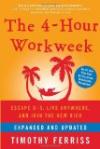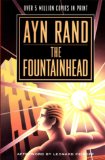Olivier Langlois's blog
Inner Loops: A sourcebook for fast 32-bit software development
06/05/07
Inner Loops: A sourcebook for fast 32-bit software development
It has historical value more than anything else...
This book is divided in 2. The first part describes the theory of assembler optimization for processors from the 486 to the Pentium Pro. 10 years ago, this information was useful but now it is pretty much deprecated as I highly doubt that Pentium optimization techniques do anything good on Athlons or Pentium IV processors. The only chapter that still contains applicable information today is the one providing general advices on optimization such as loop unrolling.
Then the second part named 'Practice' provides concrete examples of assembly optimizations for various problems such as sorting, list and tree traversals. I do not like this section neither because I feel that the presented assembly procedures are thrown at you in the face without showing you the process that the author used to derive them from the original C code. Michael Abrash's Graphics Programming Black Book does a much better job in that area by presenting you 5 versions or more of the same procedure starting from the C version that gets optimized further at each iteration. Also, someone might expect to be able to get the source from the CD-ROM coming with the book and start directly using it. Alas, it is not possible because what the presented code is sorting or searching in binary trees are integers that are directly manipulated in the registers (that is part of the presented optimizations) which has not much reuse value in a world of STL containers holding usually much more complex objects or structures than plain integers. The only value that these examples might have is that they might give you some ideas on where assembly optimization might be applied.
A much better book to learn the process of optimizing in assembly is Michael Abrash's Graphics Programming Black Book because it walks you through the optimization process step by step with more than 5 versions of the same procedure that is getting more optimized at each iteration. You will learn how to do it yourself with this book even if it suffers of the same weakness than this book. That is: it presents optimization techniques from the 8088 (that is very very old up!!!) to the Pentium Pro. Another benefit from Abrash book is that, in my opinion, there is a greater chance that you might find its code reusable.
Finally, a very good optimization book that covers optimization techniques for recent processors such as the Athlon and the Pentium IV is: Code Optimization: Effective Memory Usage.
Comments, Pingbacks:
No Comments/Pingbacks for this post yet...
This post has 1 feedback awaiting moderation...
Comments are closed for this post.
Olivier Langlois's blog
I want you to find in this blog informations about C++ programming that I had a hard time to find in the first place on the web.
| Sun | Mon | Tue | Wed | Thu | Fri | Sat |
|---|---|---|---|---|---|---|
| << < | > >> | |||||
| 1 | 2 | 3 | ||||
| 4 | 5 | 6 | 7 | 8 | 9 | 10 |
| 11 | 12 | 13 | 14 | 15 | 16 | 17 |
| 18 | 19 | 20 | 21 | 22 | 23 | 24 |
| 25 | 26 | 27 | 28 | 29 | 30 | 31 |
Search

Categories
Olivier Langlois's blog
- AAC (2)
- Book reviews (12)
- C++ (24)
- Code Optimization (4)
- Compiler (3)
- Fractal (2)
- Linux/UNIX (3)
- Multithreading (3)
- Software security (7)
- TCP/IP (8)
- Web (1)
- Windows programming (19)
- C++ (28)
- tutorials (4)
- General (10)
- Hardware reviews (2)
- Linux (12)
- Recommended books (4)
- C++ (20)
- Code Optimization (2)
- Compiler (3)
- Fractal (2)
- Linux/UNIX (1)
- Multithreading (2)
- Rare out of print (3)
- Software security (5)
- TCP/IP (7)
- Windows programming (16)
- Software reviews (0)
- TCP/IP (8)
- Video games (4)
Archives
- January 2016 (1)
- September 2015 (1)
- July 2015 (1)
- June 2015 (1)
- May 2015 (1)
- December 2013 (3)
- September 2013 (1)
- May 2013 (8)
- April 2013 (1)
- December 2010 (1)
- August 2010 (1)
- June 2010 (1)
- More...
Misc
 XML Feeds
XML Feeds
What is RSS?
Who's Online?
- Guest Users: 2
 BOOKS i'm reading
BOOKS i'm reading




